Abstract
Some 30 cases of tick-borne relapsing fever due to Borrelia are known to have occurred between 1965 and 1978 in the Pacific Northwest. This disease was found more frequently in young men with a history of wilderness exposure during the summer months. Recurrent fever was the most common symptom with temperatures reaching higher than 39.5° C (103.1° F) in all cases, and many patients had three or more febrile episodes. Splenomegaly was the second most common finding reported. Diagnosis of relapsing fever was made in 20 cases by identifying spirochetes on peripheral blood smears. In ten remaining cases the diagnosis was made on clinical and epidemiologic grounds.
Information regarding therapy was available in 21 cases. Ten patients received a tetracycline drug and all had a prompt response without relapse. Two of the patients died, a 68-year-old woman with possible myocardial involvement and a newborn infant with infection acquired in utero and meningeal involvement.
The diagnosis was often delayed in spite of outpatient evaluation and admittance to hospital, probably because borreliosis was not considered in the differential diagnosis. Because tick-borne relapsing fever is eventually a self-limited disease in most patients, it is probably not recognized often enough. Awareness of this disease and examination of the peripheral blood smear for spirochetes will lead to earlier diagnosis. Prompt initiation of tetracycline therapy should reduce morbidity associated with borreliosis.
Full text
PDF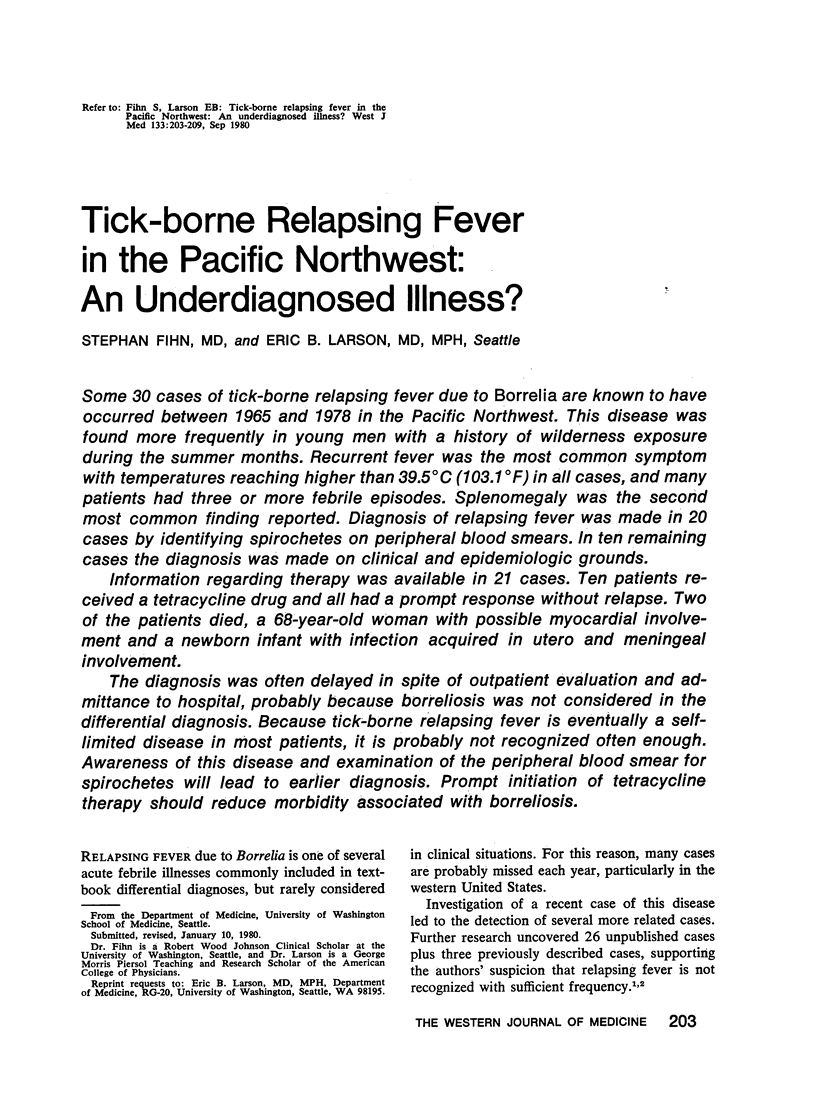
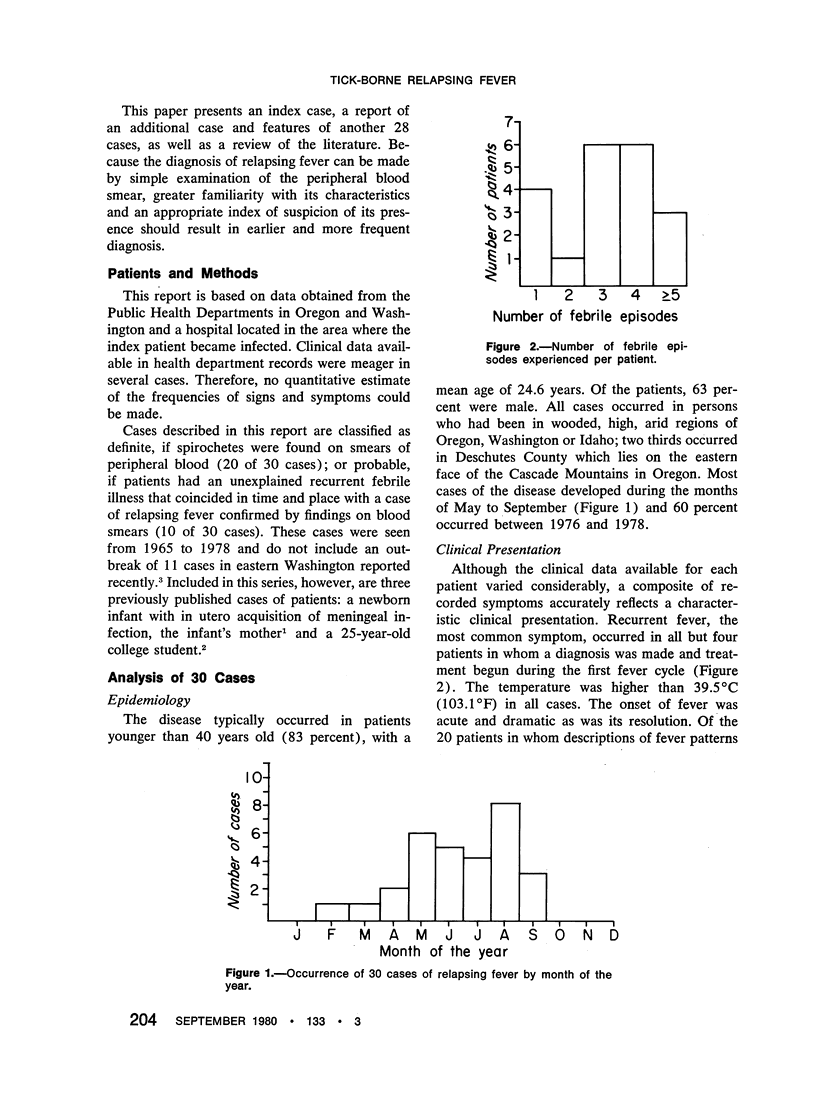
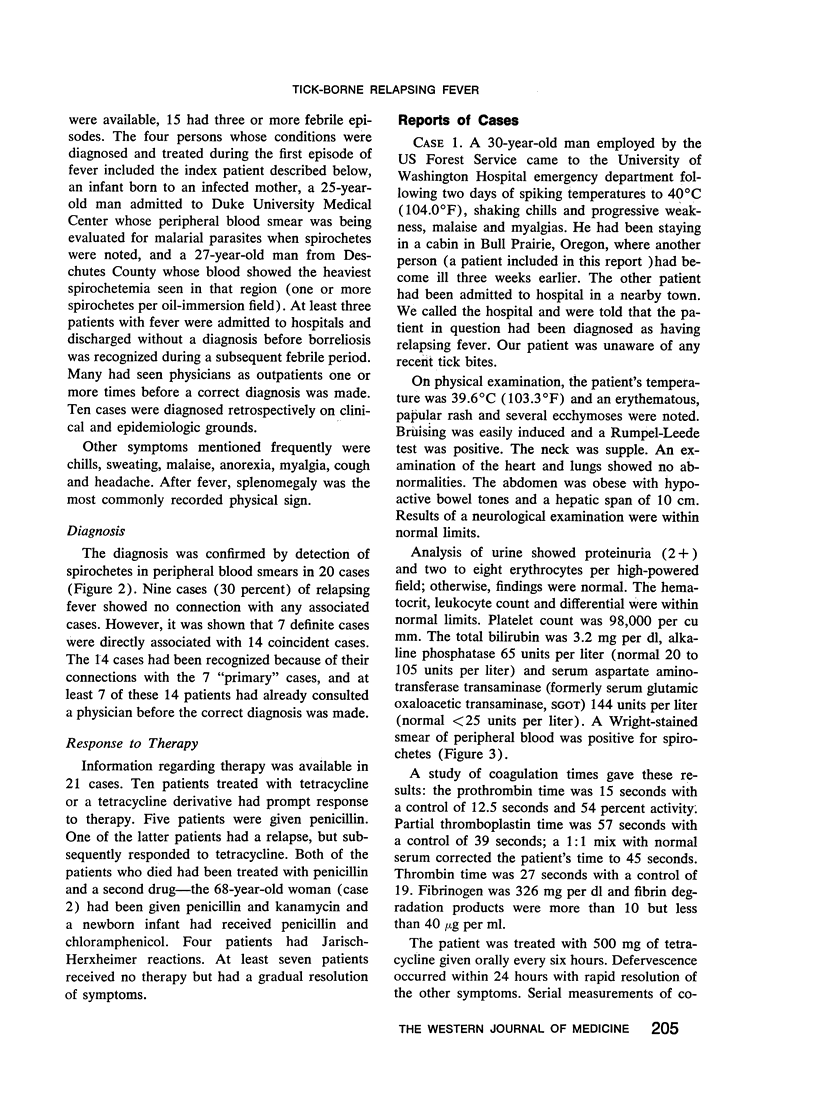
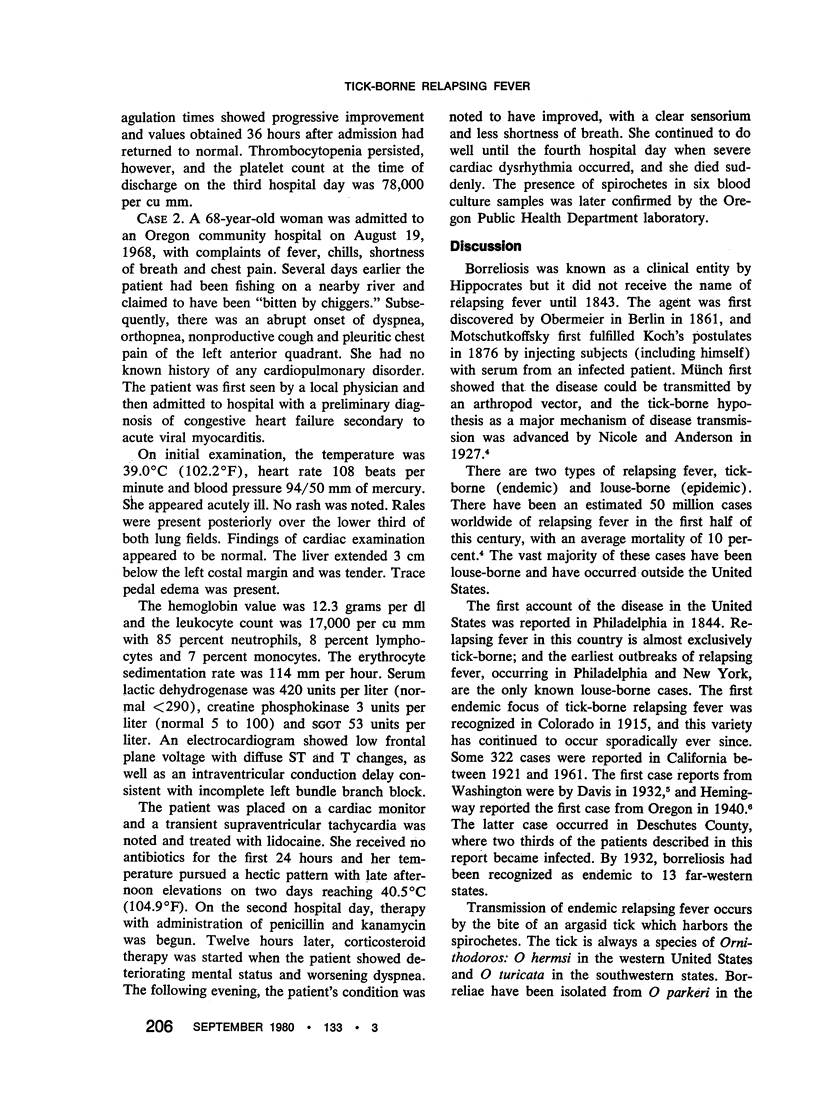
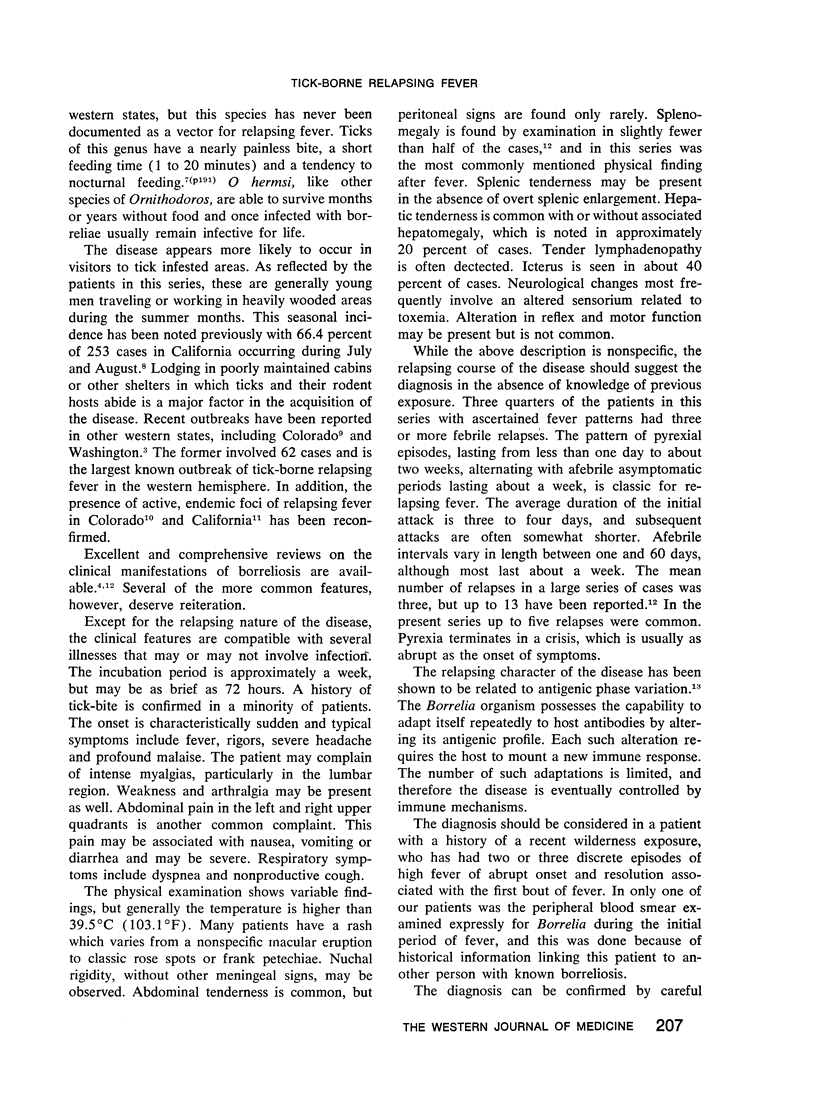
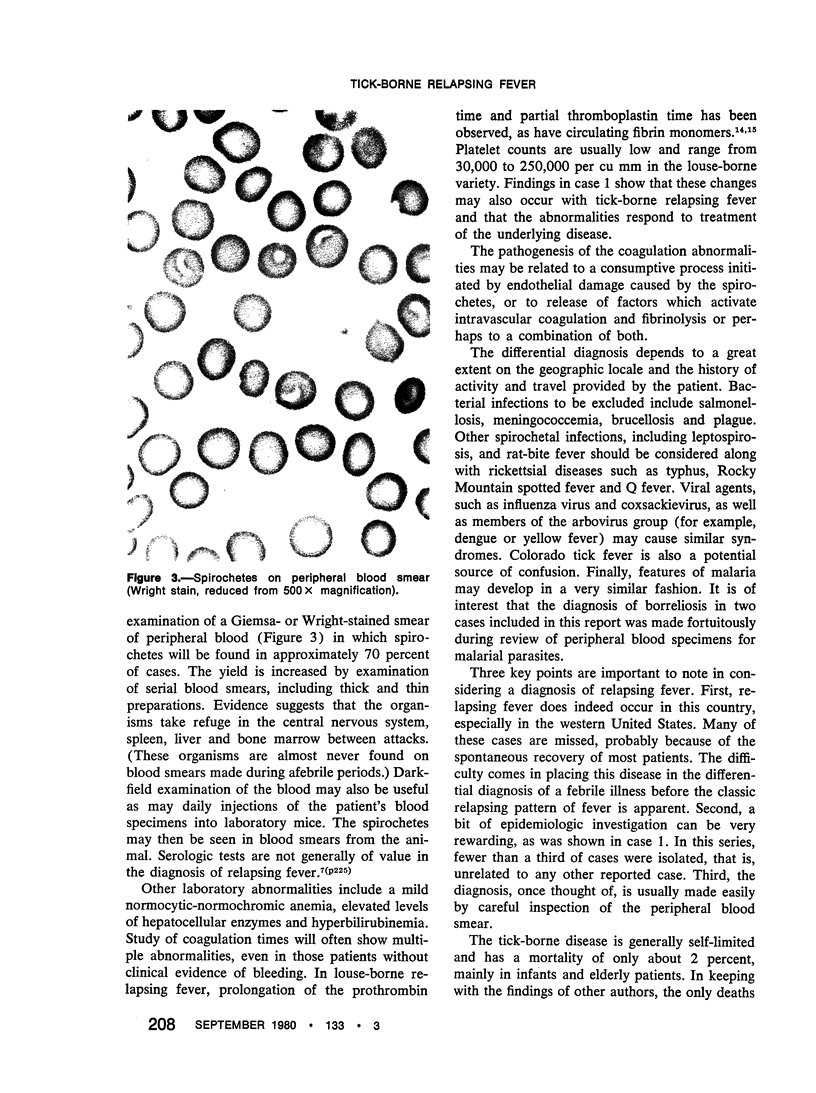
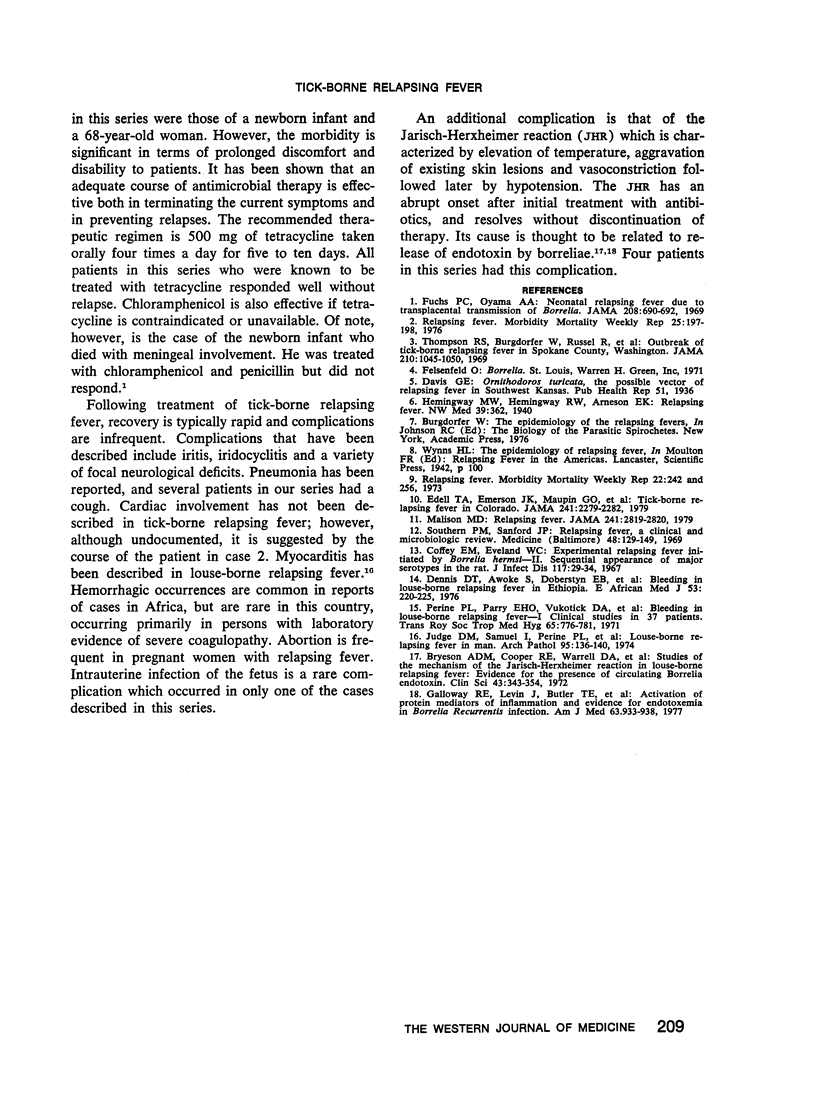
Images in this article
Selected References
These references are in PubMed. This may not be the complete list of references from this article.
- Bryceson A. D., Cooper K. E., Warrell D. A., Perine P. L., Parry E. H. Studies of the mechanism of the Jarisch-Herxheimer reaction in louse-borne relapsing fever: evidence for the presence of circulating Borrelia endotoxin. Clin Sci. 1972 Sep;43(3):343–354. doi: 10.1042/cs0430343. [DOI] [PubMed] [Google Scholar]
- Coffey E. M., Eveland W. C. Experimental relapsing fever initiated by Borrelia hermsi. II. Sequential appearance of major serotypes in the rat. J Infect Dis. 1967 Feb;117(1):29–34. doi: 10.1093/infdis/117.1.29. [DOI] [PubMed] [Google Scholar]
- Dennis D. T., Awoke S., Doberstyn E. B., Fresh J. W. Bleeding in louse-borne relapsing fever in Ethiopia; clinical and laboratory features in 29 patients. East Afr Med J. 1976 Apr;53(4):220–225. [PubMed] [Google Scholar]
- Edell T. A., Emerson J. K., Maupin G. O., Barnes A. M., Vernon T. M. Tick-borne relapsing fever in Colorado. Historical review and report of cases. JAMA. 1979 May 25;241(21):2279–2282. [PubMed] [Google Scholar]
- Fuchs P. C., Oyama A. A. Neonatal relapsing fever due to transplacental transmission of Borrelia. JAMA. 1969 Apr 28;208(4):690–692. [PubMed] [Google Scholar]
- Galloway R. E., Levin J., Butler T., Naff G. B., Goldsmith G. H., Saito H., Awoke S., Wallace C. K. Activation of protein mediators of inflammation and evidence for endotoxemia in Borrelia recurrentis infection. Am J Med. 1977 Dec;63(6):933–938. doi: 10.1016/0002-9343(77)90548-4. [DOI] [PubMed] [Google Scholar]
- Judge D. M., Samuel I., Perine P. L., Vukotic D., Ababa A. Louse-borne relapsing fever in man. Arch Pathol. 1974 Mar;97(3):136–170. [PubMed] [Google Scholar]
- Malison M. D. Relapsing fever. JAMA. 1979 Jun 29;241(26):2819–2820. [PubMed] [Google Scholar]
- Perine P. L., Parry E. H., Vukotich D., Warrell D. A., Bryceson A. D. Bleeding in louse-borne relapsing fever. I. Clinical studies in 37 patients. Trans R Soc Trop Med Hyg. 1971;65(6):776–781. doi: 10.1016/0035-9203(71)90091-5. [DOI] [PubMed] [Google Scholar]
- Thompson R. S., Burgdorfer W., Russell R., Francis B. J. Outbreak of tick-borne relapsing fever in Spokane County, Washington. JAMA. 1969 Nov 10;210(6):1045–1050. [PubMed] [Google Scholar]



